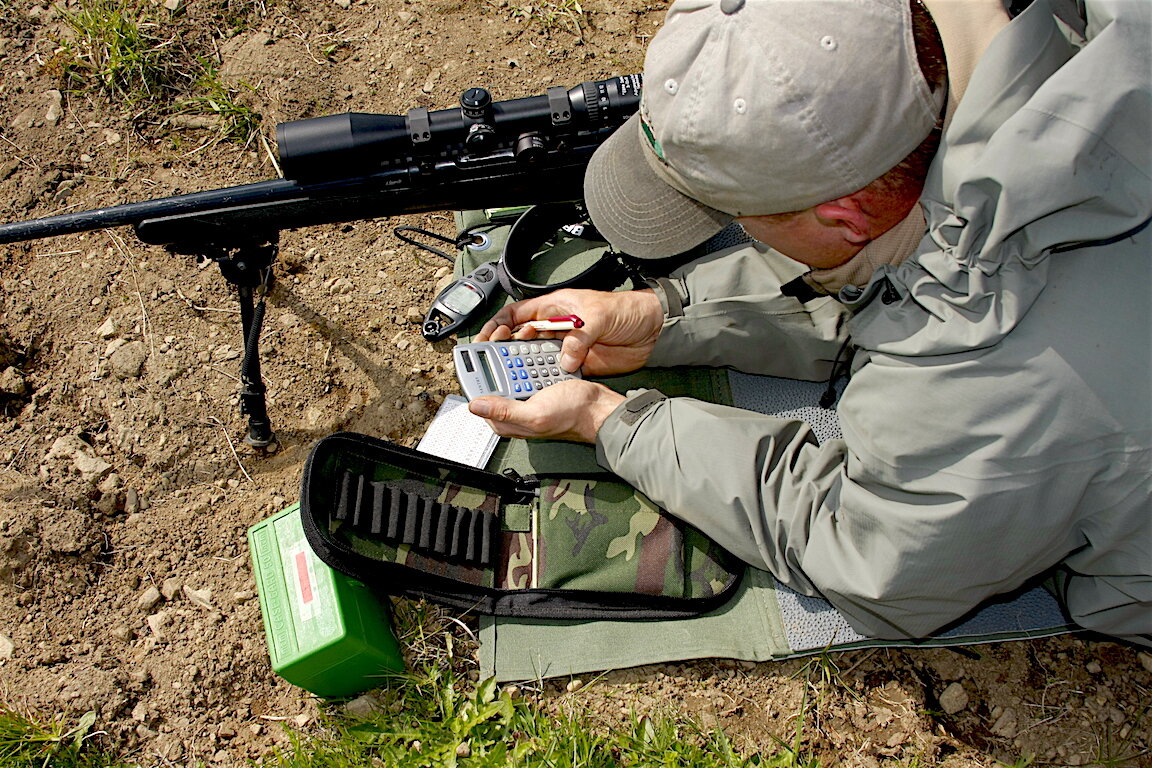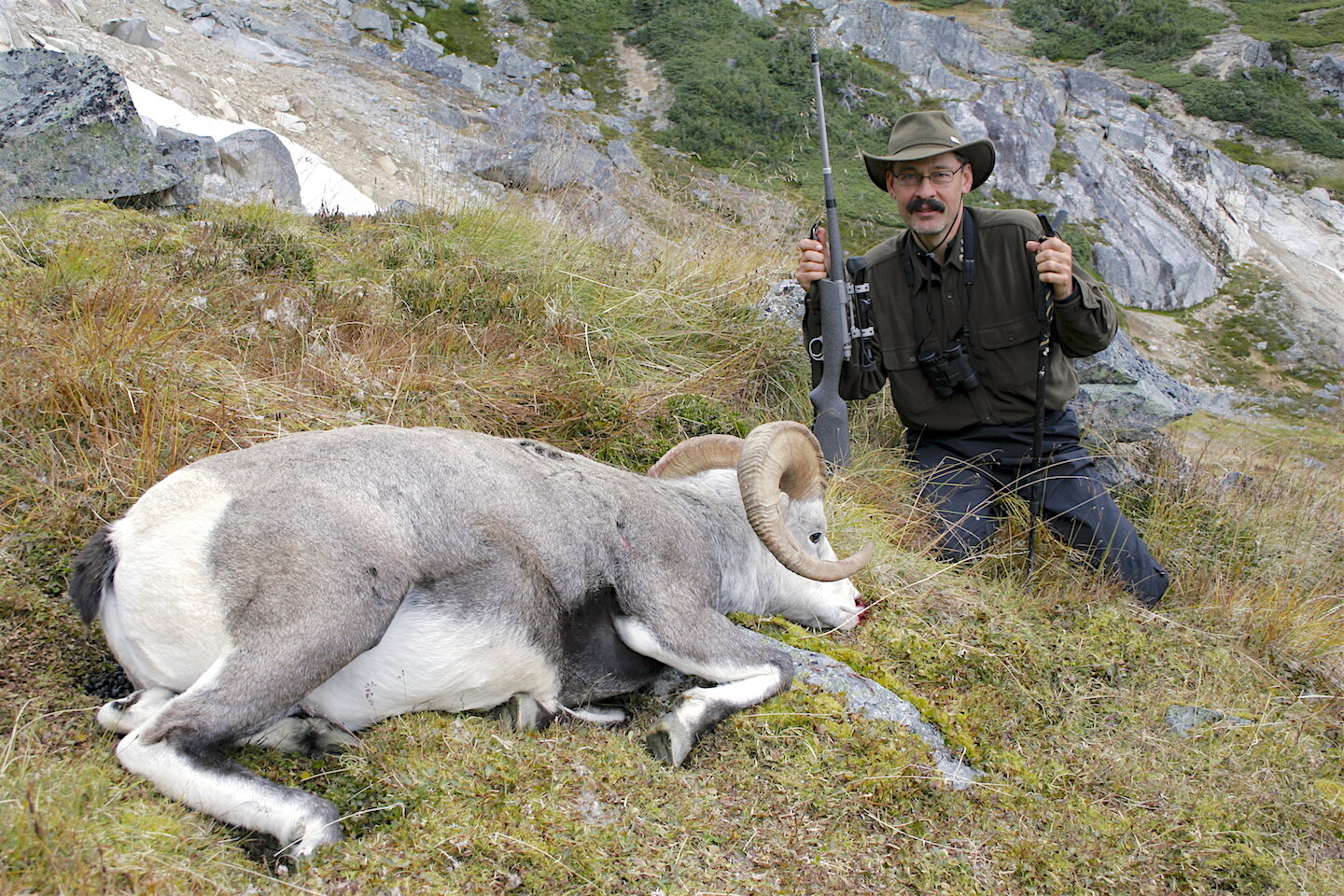Eight Tips: Shoot Quickly to Score
The young deer hunter shot often, but he didn’t shoot quickly. That made it a productive day for his ammo manufacturer and a great day for the mule deer he was trying to hit. The hunter sent eight — count ‘em, 8! — 300 Weatherby Magnum loads downrange, hitting nothing but dirt. That’s not the result you want when you pay $5,000 for a guided hunt. It’s doubly frustrating when you watch the most heavily antlered mule deer of your life bounce right out of it.
Wait a minute: did I write “didn’t shoot quickly enough?” I sure did. While we often think hunters shoot too quickly to be successful, they also shoot too slowly. That’s what this 20-something hunter had done. By the time he’d prepared all his gear and assumed his preferred field position, his buck was nearly out of range and flickering in and out of cover. It had been standing inside of 250 yards in the wide open when the rodeo started!
Running mule deer buck in a snowy pasture illustrates why its often best to shoot quickly before game gets out of range.
Shoot Quickly or Miss Your Chance
The reality of shooting big game, or even small game, is that it doesn’t always cooperate. While you’re unfolding bipod legs, cranking up scope magnification, adjusting parallax or fumbling for your rangefinder, that critter out there with all the bones on its head could be walking out of your life. And you haven’t even started your ballistic calculations yet…
This is the modern phenomenon known as “the technological crutch.” Because we have such reliable tools as lasers and calculators and adjustable telescopic sights, we think we must always use them. Bad thinking. These gadgets are wonderful when they are needed. They just get in the way when they aren’t. And as your great, great grandpa could have told you, mostly they aren’t.
Half a century ago, when American woods and fields were prowled by former WW II soldiers and country folk who had survived the Dirty 30s (often by dining on the rabbits, rodents, pheasants and ducks they’d head shot with 22 rimfires,) hunters routinely shot game from offhand, standing positions. They did it from ten feet. They did it from 200 yards. Sometimes they even did it from 300 yards. And usually with open sights and quite often while the game was moving. No big deal. These same folks threw baseballs to home plate, footballs to wide receivers, and darts to barroom dart boards. They did it with basic hand-eye-coordination skills. The last doctor I talked to said most humans still possess these. They just don’t want to believe they do.
Shoot Quickly or Miss Your Shot
Here’s a big part of the problem: excessive aiming. You might call it an attempt at precision aiming from imprecise positions. You’ve probably seen someone do this. You’ve probably done it yourself. I know I have. What happens is we aim, and aim, and aim, trying to get that reticle to stop wavering. We want to shoot when it’s anchored like a steel cross over the buck’s chest. But that never happens because we are flesh and blood. And emotional. And not on sand bags atop a bench. On rare occasions we can train flesh and blood to hold steady enough for a dead-solid shot. But seeing a big rack in the scope usually blows that. Just too exciting. We shake. We quiver. We pant and hyperventilate. It feels as if each heart beat slams a gallon of blood through our arms, half of it high octane adrenaline. The big question is: how do we get around this?
How To Train to Shoot Quickly
Based on the numbers of rifle hunters wedded to benches, sandbags, bipods, blinds and treestands, it’s no wonder so many of us are lousy field shots. Odds are we’ve never trained to shoot under field (i.e hunting) conditions.
I’m far from an expert. I’ve never won an official accuracy contest. But I rarely miss game because, during more than 50 years of hunting and shooting, I’ve learned to shoot quickly and within range of my known capabilities. In a shooting competition, you, your brothers, sisters and your ten best friends might be able to outshoot me, but deer and elk fear me and my freezer is full. (Knock on wood! I hope I didn’t just jinx myself.)
Honestly, I don’t know the absolute best way to become a fantastic field shot, but here are some ideas you might think about and try:
8 Tips for Shooting Quickly and Accurately
1. Accuracy is relevant to the size of the target. I think one of our problems is we’ve all been brainwashed into thinking we must hit a bottle cap with five consecutive shots. Not really. If you’re hunting deer, you need to hit a vital zone about the size of a volleyball. It doesn’t matter if you hit the center or the edges. It’s all vital zone. Lungs, heart, spine. It’s a big target. An elk is even bigger and a moose?! (I’m almost embarrassed to confess I missed a moose once. Nerves, pure and simple. Watched the bull for a long time, waited nervously as it lumbered closer, crawled to “can’t miss” distance, and then flinched like a novice. I calmed down after that and scored. Kind of fun discovering I can still get that excited.) Know the vital zone diameter of the game you hunt. Then understand that if you can hit this rather large target, you and your rifle are accurate enough.
2. Start big and close. Hitting a 12-inch disc at 50 yards is a lot more beneficial than missing a 10-inch circle at 200 yards. As you train and practice, start close with big targets to build confidence. Concentrate on hitting nearer and nearer the center. Then back up.
3. Use a 22 rimfire. Ammo is inexpensive, the bang isn’t painfully loud, and there is no recoil. This is the perfect rifle for perfecting your trigger pull. Just make sure the rifle has a decent trigger. You don’t want to train on something that creeps for a quarter inch and breaks at six pounds. Invest in a decent Timney or other after market trigger or pay a gunsmith to fix the one you’ve got. It’ll be worth every penny and then some.
4. Expect to be moving. You usually can’t get bench steady in the field. Expect to twitch and wobble those crosshairs. Don’t fight the wiggle; use it to signal your shot. Some shooters move their sight left to right across their target, breaking the trigger just as the sight reaches the magic spot. Others like starting above the target and sliding down. Or bottom up. Doesn’t matter much so long as it works for you. Choose one, practice it and be consistent.
5. Do not squeeze until “the shot surprises you!” This old “surprise trigger break” advice has been taught for generations, but it’s really not the best way to shoot. A skilled, in-command shooter knows when his trigger will break and he or she commands it to break when it needs to. The surprise break invites slow and delayed shooting as you fight to hold on target while waiting for the surprise. That’s why it doesn’t work well. What if it surprises you just as you’ve wobbled off target? If you’re anchored on a bench and sand bags, the surprise trigger break can work. If not, best develop that moving break. Learn how your trigger feels just before it breaks, then tighten up and make it snap when you need it to.
6. Turn down scope power. If you don’t think you shake much when aiming a rifle, try it with a 10X or more powerful scope setting. You’ll get so frustrated trying to keep things still that you’ll wear out before it’s time to break the shot. To alleviate this, turn scope power down to 6X, 4X, even 2X. Things will look a lot smoother, you’ll gain confidence and be able to time your trigger to what appears to be a smoother slide onto your target. I once shot a ram at 325 yards after turning my scope down to 3X when I thought I was cranking it up to 9X. Yeah, sometimes I get excited.
7. Dry fire. I recommend this a lot because it’s simple, free and it works. Going through the motions with an empty rifle is the most useful training tactic you can employ, and it’s free. Dry firing will not hurt modern, bolt-action rifles or most centerfire rifles of any vintage. If in doubt, ask the manufacturer or use snap caps from Cabela’s. Do not dry fire rimfires.
8. Follow through. The idea is to watch your bullet fly into the target. Impossible, of course, but a good trick to keep up your concentration. You don’t want to be thinking about your rifle, trigger, scope or shakes. You want all your concentration to be on the target and the reticle’s relationship to it. Dry firing allows you to see where the reticle is when the firing pin falls. See that and you’re well on your way.
Conclusion
Effective field shots are not usually champion target shooters. They don’t have to be. Teach yourself to shoot quickly from field positions and you’ll be prepared to make most of your hunting shots inside of 200 yards. Beyond that distance, you usually have time to set up your complicated, high-tech gear for a precise long shot.
Veteran hunter Ron Spomer will take his time to set up a precise shot when possible, but he also shoots quickly when necessary. In 2018 he will be instructing classes on field hunting/shooting techniques based on the maximum point blank range zeroing system. For dates and pricing, email office@brandedrockcanyon.com.











